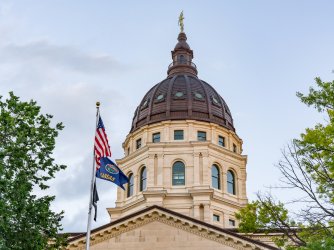Table of Contents
Misunderstanding ‘Harassment’
Last week, FIRE kicked off a blog series about how schools can reform problematic speech codes with a discussion of why mandating "civility" is inconsistent with students' right to free speech. This week, we are tackling another trouble spot for free speech: the harassment policy.
As an initial matter, campus harassment policies can be divided into two categories: policies prohibiting discriminatory harassment (including sexual harassment) and policies prohibiting general harassment (including threats and stalking). It will be most useful to discuss these categories separately.
Discriminatory Harassment
Federal anti-discrimination law requires colleges and universities receiving federal funding (which is virtually all of them) to prohibit discriminatory harassment on campus. The U.S. Supreme Court has set forth a very clear definition of discriminatory harassment in the educational setting, a definition carefully tailored to balance universities' twin obligations to protect free speech and prevent harassment. In Davis v. Monroe County Board of Education, 526 U.S. 629, 652 (1999), the Supreme Court defined peer-on-peer harassment in the educational context as conduct that is:
so severe, pervasive, and objectively offensive, and that so undermines and detracts from the victims' educational experience, that the victim-students are effectively denied equal access to an institution's resources and opportunities.
In 2003, the head of the U.S. Department of Education's Office for Civil Rights (OCR), the agency that enforces federal anti-discrimination laws at educational institutions, issued a "Dear Colleague" letter explicitly stating, "I want to assure you in the clearest possible terms that OCR's regulations are not intended to restrict the exercise of any expressive activities protected under the U.S. Constitution." Specifically, the letter stated:
Some colleges and universities have interpreted OCR's prohibition of "harassment" as encompassing all offensive speech regarding sex, disability, race or other classifications. Harassment, however, to be prohibited by the statutes within OCR's jurisdiction, must include something beyond the mere expression of views, words, symbols or thoughts that some person finds offensive. Under OCR's standard, the conduct must also be considered sufficiently serious to deny or limit a student's ability to participate in or benefit from the educational program.
In April 2011, OCR issued a "Dear Colleague" letter regarding sexual harassment and sexual assault, one that unfortunately failed to mention the exacting, speech-protective understandings of hostile environment sexual harassment contained in previous OCR guidance letters. (You can read FIRE's full statement about the April 2011 Dear Colleague letter's failure on this front here.) But that guidance does not alter the fact that compliance with federal anti-discrimination law does not—indeed, cannot—require universities to prohibit speech and expression protected by the First Amendment.
Unfortunately, many universities continue to maintain discriminatory harassment policies that fall far short of the Supreme Court's Davis standard and prohibit or threaten speech protected by the First Amendment—or, in the case of private universities, by the school's own promises of free speech and expression.
Some of those policies simply define discriminatory harassment in a way that bears little or no relationship to the legal standard. Oregon State University, for example, defines "sexual harassment" to include "sexual or gender-based behavior that is unwanted and/or nonconsensual, and has the effect, intended or unintended, of producing harm." Such conduct "includes behavior along a continuum of severity, from offensive talk to physical violence." Since "harm" is left totally undefined, it could mean anything from mere hurt feelings or discomfort to the type of serious interference with educational opportunities contemplated by Davis.
Slippery Rock University of Pennsylvania's policy includes the appropriate legal standard, but then provides that "[f]or purposes of this policy, even if misbehavior is not sufficiently severe or pervasive to constitute a basis for an award of damages or other relief to a victim under state or federal law, Slippery Rock University may still issue disciplinary action" if the conduct violates the university's conduct code. This disclaimer largely negates the inclusion of the legal standard, since the university explicitly reserves itself the right to punish conduct that does not rise to the level of the standard.
Another common problem we see is policies that employ a definition of harassment that tracks (or comes close to tracking) the legal standard, but then provide a laundry list of purported "examples of harassment" that explicitly include protected expression.
For example, at Duke University, potential examples of harassment include "[u]nwelcome comments or jokes of a sexual or explicit nature." At Amherst College, they include "derogatory language directed at another person's sexuality or gender." And at Northern Michigan University, sexual harassment may include "[w]ritten, verbal, pictorial, or nonverbal communications of a sexual nature which do not contribute to or advance the work, service, or education activity being conducted," and the policy explicitly states that such communications "shall be presumed unwelcome without the complainant communicating that the behavior is unwelcome."
Lists of examples like this are highly misleading. While it is theoretically possible that such behaviors could be components of sexual harassment if they rose to the necessary level of severity and pervasiveness, most offensive or derogatory comments (and terms of endearment) are, in fact, protected speech.
General Harassment
The other type of harassment policy we often see is one prohibiting more general forms of harassment, such as threats and stalking. While universities absolutely should prohibit such behaviors, many policies go beyond this to include protected speech and expression in their definitions of harassment.
One very common problem with general harassment policies is a prohibition on "verbal abuse." Unlike threats, intimidation, and harassment, "verbal abuse" has no specific legal definition. It is so vague that it potentially applies to many types of protected speech, such as an individual's harshly or angrily worded expression of opinion on a controversial topic. But the right to free speech, if it is to be meaningful, includes speech that is harshly worded or offensive. To quote the Supreme Court, "Speech is often provocative and challenging. It may strike at prejudices and preconceptions and have profound unsettling effects as it presses for acceptance of an idea. That is why freedom of speech, though not absolute, is nevertheless protected against censorship or punishment, unless shown likely to produce a clear and present danger of a serious substantive evil that rises far above public inconvenience, annoyance, or unrest." Terminiello v. Chicago, 337 U.S. 1, 4 (1949).
Universities maintaining bans on "verbal abuse" include Eastern New Mexico University, Miami University of Ohio, and Occidental College, to name just a few.
Other general harassment policies contain similarly vague prohibitions, leaving students uncertain of what they may and may not say and giving university administrators excessive discretion to punish unpopular speech. Binghamton University, for example, prohibits "communicating in a manner likely to cause injury, distress, or emotional or physical discomfort and which serves no legitimate purpose." "Distress" and "emotional discomfort" are not defined. Similarly, the University of Denver prohibits "[a]ny act, display, or communication that causes substantial injury or distress."
Overly broad and vague harassment policies—discriminatory or general—are a common source of free speech violations on campus. Thankfully, the fix is fairly simple: Discriminatory harassment policies should track the Supreme Court's Davis standard and should not include lists of examples that muddy the waters by implying, or outright stating, that protected speech is subject to punishment. And general harassment policies should stick to prohibiting legally proscribable behaviors like threats and stalking, staying away from vague or overly broad terms like "verbal abuse," "discomfort," and "emotional harm."
Stay tuned next week for a discussion of restrictions on electronic communications.
Recent Articles
FIRE’s award-winning Newsdesk covers the free speech news you need to stay informed.

Texas tramples First Amendment rights with police crackdown of pro-Palestinian protests

Here’s what students need to know about protesting on campus right now

Kansas takes a stand for intellectual freedom
